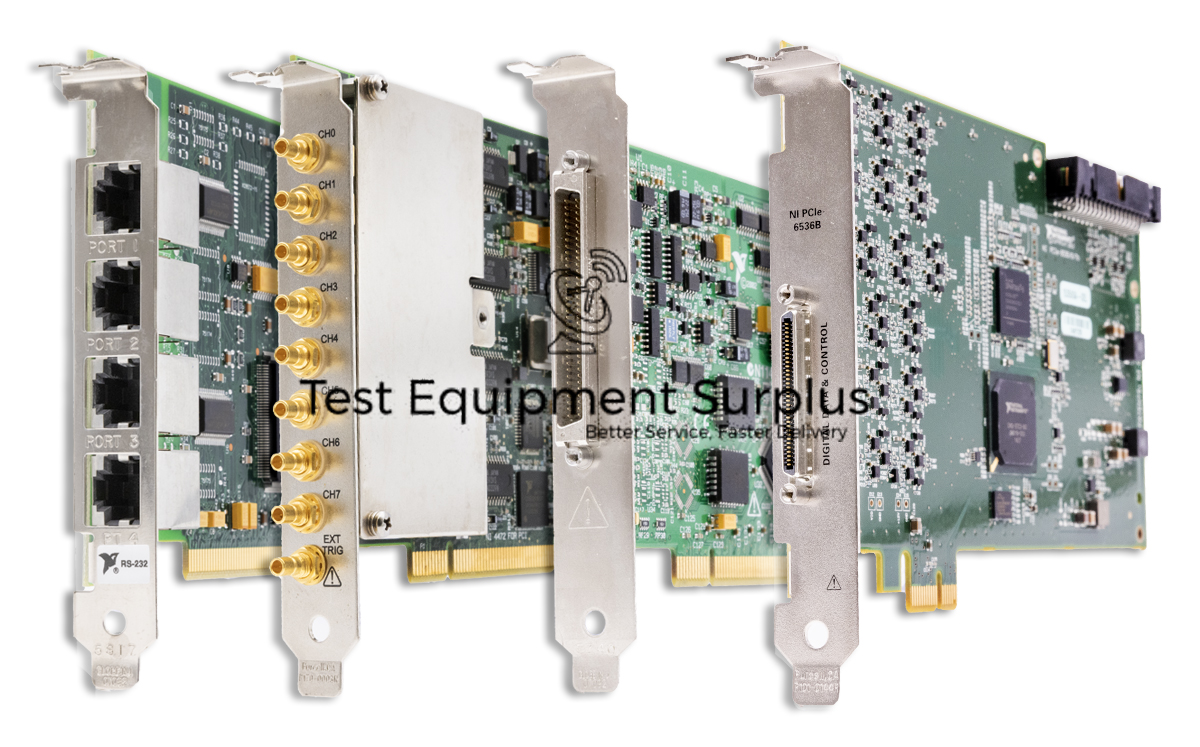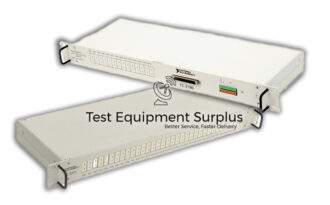Description
The National Instruments PCI-1408 is an IMAQ device that supports a variety of video standards including PAL, RS-170, NTSC, and CCIR, and it is designed to deliver high-accuracy monochrome image acquisition with an 8-bit resolution and a 5-20 MHz pixel clock rate.
This device features an 8-bit look-up table (LUT) and comes with an ADC to facilitate video signal conversion to digital signals. It is factory calibrated, ensuring ease of installation and immediate use for image acquisition tasks. Additionally, the PCI-1408 includes an integrated RTSI bus for advanced synchronization capabilities.
Offering a range of programming options such as IMAQ Vision LabVIEW, LabWindows/CVI, and more, this device caters to diverse development needs. The PCI-1408 supports two input modes, specifically VIDEO0 and External CLK, with two types of input sources – a BNC connector and a DSUB 25-pin port. Input signals can be processed in either differential input (DIFF) or referenced single-ended mode (RSE).
Despite its obsolete status declared by National Instruments, the PCI-1408 remains available for purchase and repair through Apex Waves, ensuring continued support for existing applications.
| Specification | Details |
|---|---|
| Manufacturer | National Instruments |
| Part Number | PCI-1408 |
| Type | IMAQ Device |
| Compatibility | PAL, RS-170, NTSC, CCIR |
| Resolution | 8-bit |
| Pixel Clock Rate | 5-20 MHz |
| Look-Up Table (LUT) | One 8-bit LUT |
| ADC Included | Yes |
| Calibration | Factory Calibrated |
| RTSI Bus Integration | Yes |
| Programming Options | IMAQ Vision LabVIEW, LabWindows/CVI, etc. |
| Input Modes | VIDEO0, External CLK |
| Input Sources | BNC Connector, DSUB 25-pin Port |
| Input Signal Modes | Differential Input (DIFF), Referenced Single-Ended Mode (RSE) |
| Obsolete Status | Declared by National Instruments, available at Apex Waves |
Question 1: What video standards does the National Instruments PCI-1408 support and what are its key image acquisition features?
Answer 1: The National Instruments PCI-1408 IMAQ device supports a pixel clock rate of 5-20 MHz, and despite its obsolete status, it can still be purchased and repaired through Apex Waves.
Question 2: What video standards does the National Instruments PCI-1408 support, and what are its key features in terms of resolution, pixel clock rate, and input modes?
Answer 2: The National Instruments PCI-1408 supports PAL, RS-170, NTSC, and CCIR video standards, and its key features include an 8-bit resolution, a 5-20 MHz pixel clock rate, and two input modes: VIDEO0 and External CLK, which can accommodate signals through a BNC connector or DSUB 25-pin port in either differential input (DIFF) or referenced single-ended mode (RSE).
Question 3: What kind of pixel clock rate does the National Instruments PCI-1408 IMAQ device support, and through which company can it still be purchased despite its obsolete status?
Answer 3: The obsolete National Instruments PCI-1408 IMAQ device supports video standards such as PAL, RS-170, NTSC, and CCIR, offers an 8-bit resolution and a 5-20 MHz pixel clock rate, features an 8-bit look-up table (LUT) and an ADC for video-to-digital signal conversion, is factory calibrated, and includes an RTSI bus for synchronization. It allows for programming with IMAQ Vision LabVIEW, LabWindows/CVI,
Question 4: What are the features and specifications of the obsolete National Instruments PCI-1408 IMAQ device, and where can it still be purchased and repaired?
Answer 4: The National Instruments PCI-1408 supports PAL, RS-170, NTSC, and CCIR video standards, and its key image acquisition features include high-accuracy monochrome image capture with an 8-bit resolution, a 5-20 MHz pixel clock rate, an 8-bit look-up table, ADC for signal conversion, factory calibration, and RTSI bus for advanced synchronization.
Question 5: What types of video standards does the National Instruments PCI-1408 IMAQ device support, and what are its image acquisition specifications regarding resolution and pixel clock rate?
Answer 5: The National Instruments PCI-1408 IMAQ device supports PAL, RS-170, NTSC, and CCIR video standards, and it is designed for high-accuracy monochrome image acquisition with an 8-bit resolution and a pixel clock rate of 5-20 MHz.



